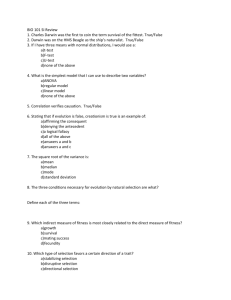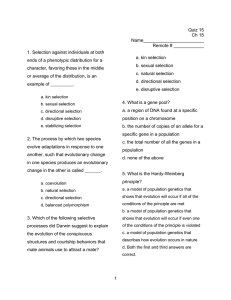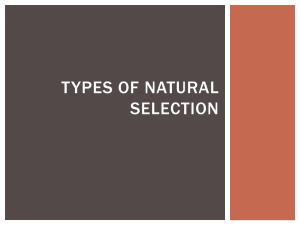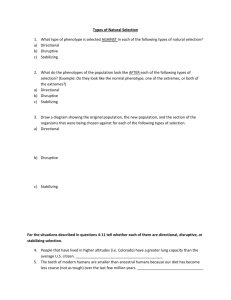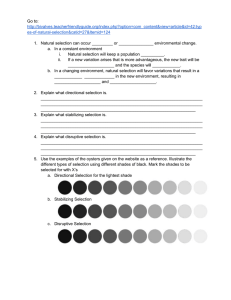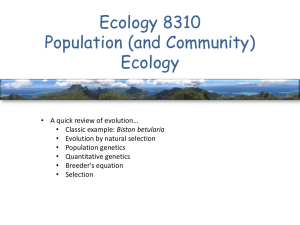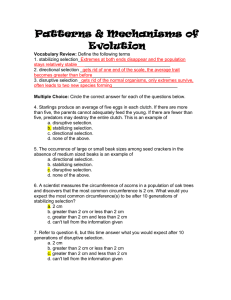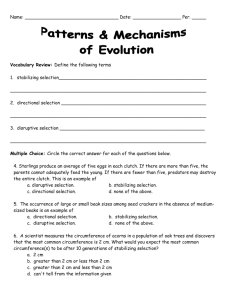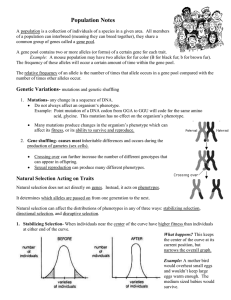Evolution as Genetic Change
advertisement
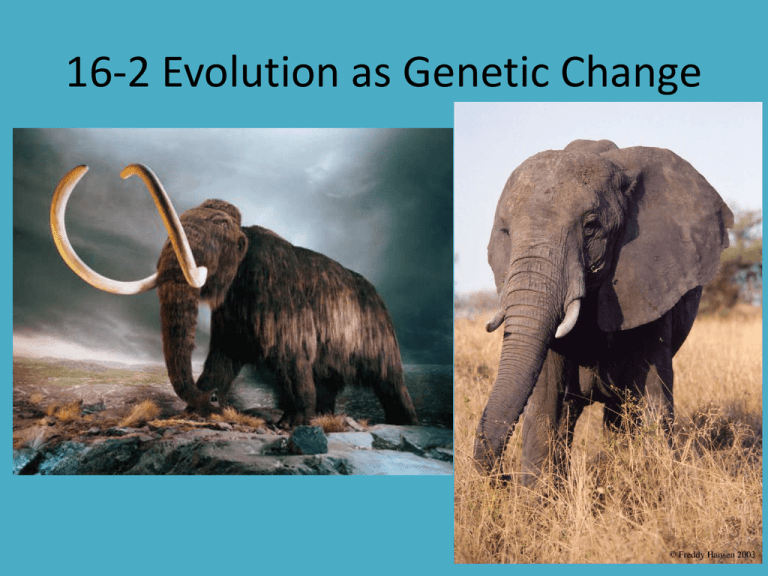
16-2 Evolution as Genetic Change •Natural selection does not directly act on genes, but instead upon the phenotypes they create. •Natural selection on single-gene traits can change allele frequencies and cause evolution to occur. •EX. If a population of red lizards migrated to an area with black soils, more would be eaten. If a mutation occurred for black coloration, this phenotype would be favored for survival and the original red phenotypes would be selected against. For polygenic traits, natural selection can have three effects on phenotypes. Each of these can be represented by the type of curve that would result from a graph. 1. Directional selection- individuals at one end have higher fitness than those in the middle or at the opposite end. 2. Stabilizing selection- individuals in the center have greater fitness than those at the ends of the curve. 3. Disruptive selection- the individuals at the upper and lower extremes have greater fitness than those in the middle. •Directional Selection occurs toward one end. The mean shifts right or left. •Stabilizing Selection occurs in the middle. The mean is more concentrated for selection. •Disruptive Selection occurs at the two extremes. The mean is selected against. •In this example, a population of seed-eating birds experiences directional selection when a food shortage causes the supply of small seeds to run low. •In this case, birds with larger beaks have higher fitness. • Therefore, the average beak size increases. In this example of stabilizing selection, human babies born at an average mass are more likely to survive than babies born either much smaller or much larger than average. •In this example of disruptive selection, average-sized seeds become less common, and larger and smaller seeds become more common. •As a result, the bird population splits into two subgroups specializing in eating different-sized seeds. Alleles can become more common just by chance. Random changes in allele frequency are called genetic drift and typically only occur in small populations. •A situation in which allele frequencies change as a result of the migration of a small subgroup of a population is known as the founder effect. •One example of the founder effect is the presence of various finch species on the Galapagos islands. All of those species descended from the same original mainland population that flew to the islands millions of years ago when the islands were young. •When a population remains constant with no change in allele frequencies, a unique phenomenon occurs called genetic equilibrium. •The Hardy-Weinberg Principle provides a mathematical formula to account for the gene frequencies within a population so that we can tell if the population is evolving or locked in genetic equilibrium. Five conditions that must be met for HWP to be accurate. 1. Random mating within the population 2. Very large population size 3. No immigration or emigration 4. No mutations 5. No natural selection p and q are variables used to represent alleles. (Ex. p = A, q = a, pq = Aa) (p + q)2 = p2 + 2pq + q2 Because the total alleles represent 100% of the population, (p + q)2 must equal 1.00 Exit Slip • How are disruptive selective and directional selection alike? How are they different?

